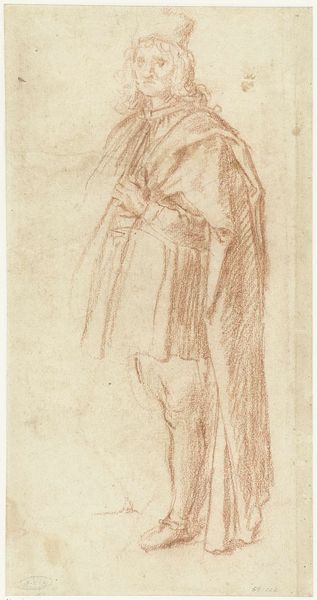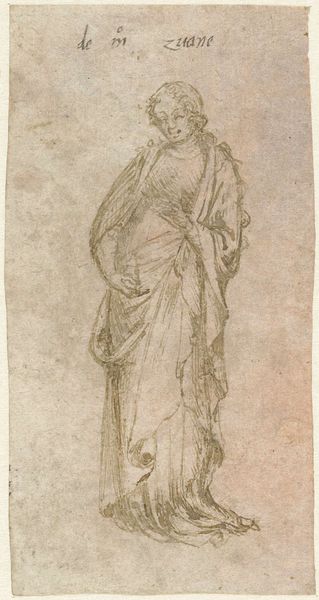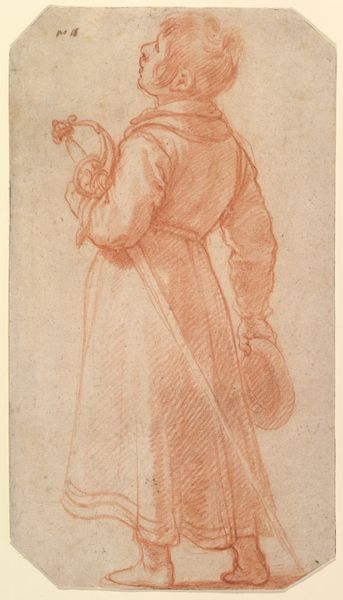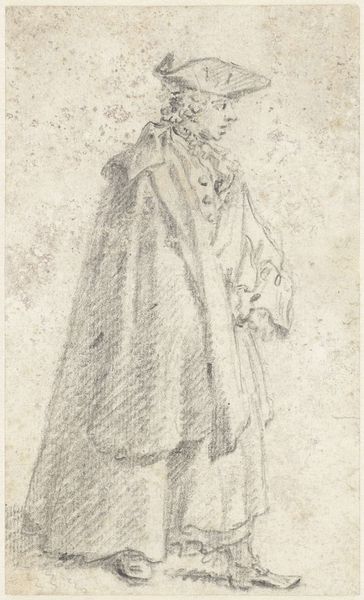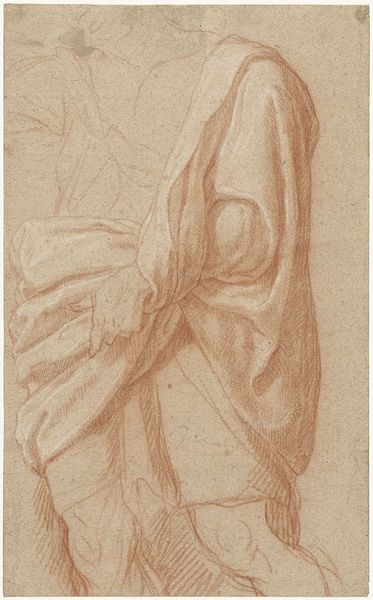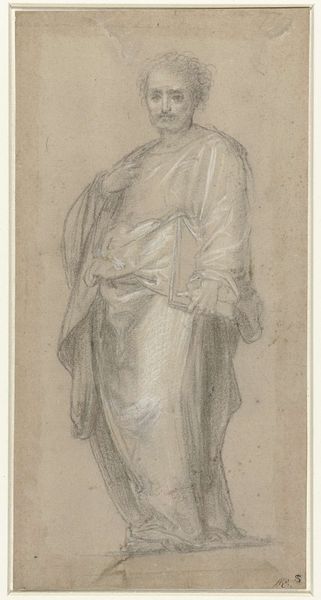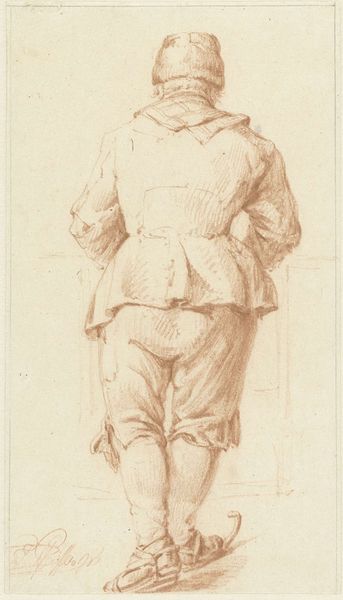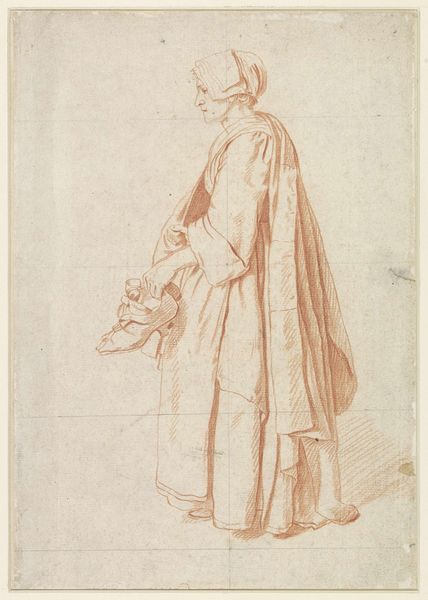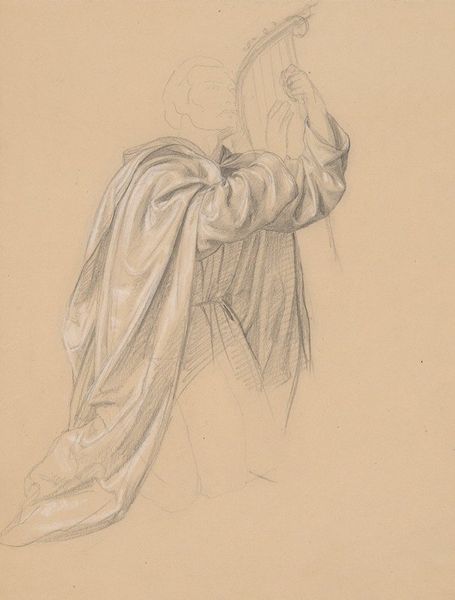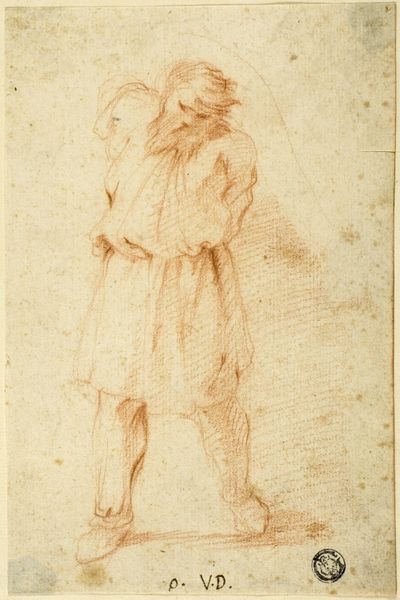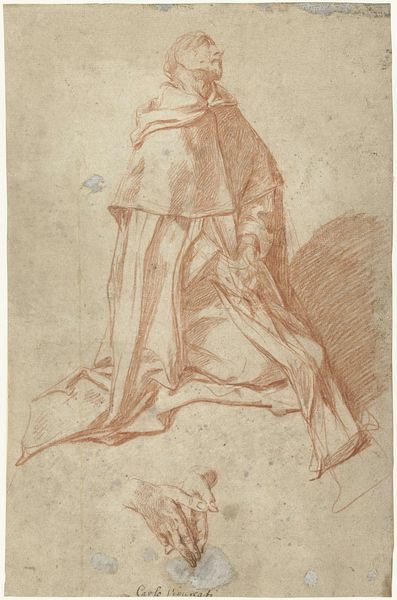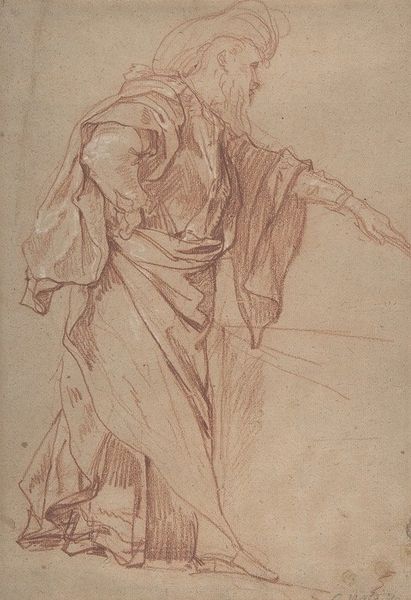
drawing, pencil
#
portrait
#
drawing
#
pencil sketch
#
etching
#
mannerism
#
pencil drawing
#
pencil
#
pencil work
Dimensions: height 340 mm, width 180 mm
Copyright: Rijks Museum: Open Domain
Curator: Look at this delicate drawing. It’s a piece by Bernardino Poccetti, titled "Study of a Standing Young Woman, in Profile to the Left," created around 1604. Editor: It feels surprisingly modern for its time, almost like a fashion sketch. I'm drawn to the economy of line. Such simplicity in conveying form! What material did he use? Curator: He employed a reddish pencil, likely chalk, to achieve those subtle gradations. Consider the social implications here: drawing as an essential tool for the Mannerist artist's preparatory work for larger frescoes. Poccetti was, first and foremost, a fresco painter. Editor: Frescoes... and public works. Was this drawing a commissioned study for a more significant, politically charged piece or destined for the collector's portfolio? It seems intended for public viewing somehow, doesn’t it? Curator: Possibly. It does capture a sense of lived experience, the texture of the cloth, the weight of the headdress, which offers a direct link to the socio-economic factors surrounding textile production. Consider how clothing communicates status. Editor: And also constrains it! Notice the tension in her hands. It conveys a vulnerability, perhaps indicative of women's restricted societal roles. Did the elite circles or guilds determine whose image was consumed and how? Curator: Definitely. But what fascinates me, equally, is the economy of his means: A basic drawing tool yet Poccetti coaxes it to create light, shadow, and a complex interplay of planes, which elevated craft into what society then valued as "art." Editor: It really encapsulates that shift! So, Poccetti gives us not just the portrait, but reveals through materials the production context of image-making and social identity in his era. It is powerful. Curator: Exactly. Examining pieces like this opens new dimensions of historical context and artistic labor practices. Editor: Indeed, revealing how social, economic, and creative practices become inscribed within even the simplest drawing.
Comments
No comments
Be the first to comment and join the conversation on the ultimate creative platform.
